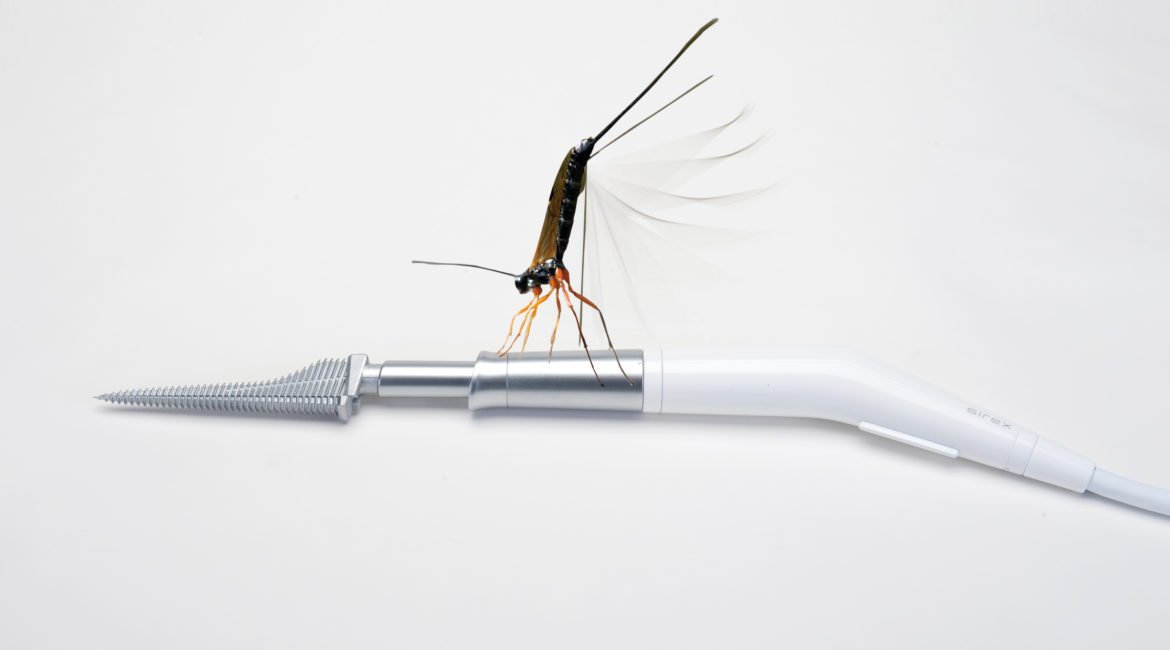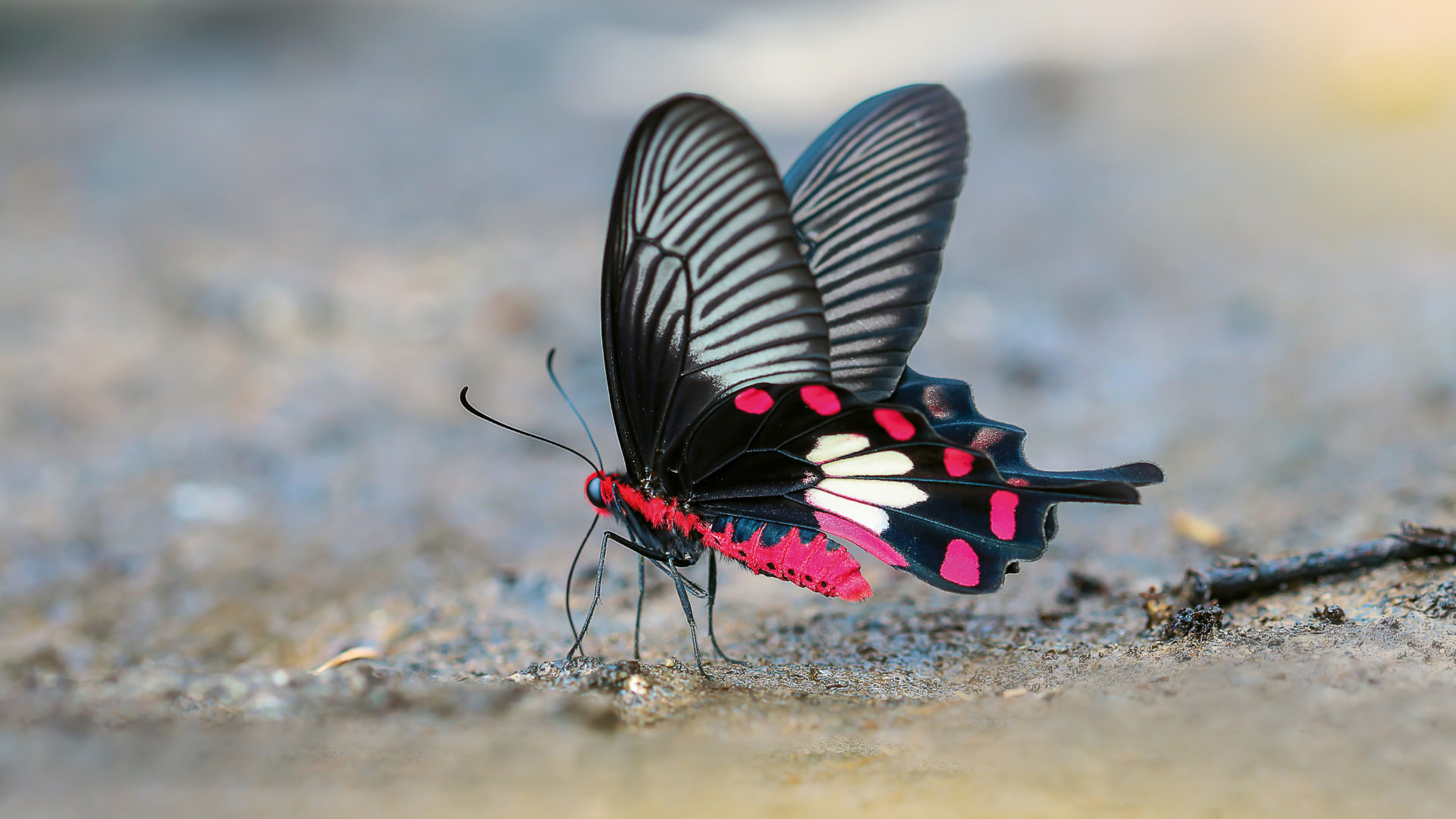Source: shutterstock
Role models from nature: Where is the added value?
As you read this article, a species is probably going extinct. This happens even before we get to learn about it. According to a biodiversity report from the United Nations, up to 130 animal and plant species die out every day. With each species, we also lose a role model from which we could learn something.
Das, was wir an Vorbildern in der Natur haben, lohnt sich genauer anzuschauen – insbesondere im Hinblick auf deren Überlebensstrategien und ihre Fähigkeiten, mit ihrer Um- und Mitwelt zu interagieren. Functional morphology, behavioral biology, sensory physiology and many other specialist areas of biology enable scientific analysis. Bionics tries to transfer the knowledge into technology and evolution and organization biomimetics transfers the knowledge to the economy. We can use this to generate added value from nature.
How the added value of a biological principle can become valuable is shown by a scenario that ESA and NASA consider to be very real: an asteroid colliding with Earth. The worst non-human-made threat to humanity that can be assumed can be prevented by humans, thanks to their technological capabilities: According to the ESA, you need a bomb detonated in a hole to effectively dismantle an asteroid. We can discover an approaching celestial body, even a small one, in time. The rocket reaches its destination with a bomb. It is difficult to simply drill a hole into an object that has no gravity – at least until you have finished reading this article.
Added value in numbers
Engineers and business economists in industry can’t simply be convinced with fine words and hypotheses when deciding to go and finance along a biologically-inspired path. Industry understands added value purely based on numbers. Two examples of biomimetic implementation demonstrate this.
Leaf veins are the logistic routes through which a plant’s water and sugar are transported. Even distribution over the leaf surface must be ensured. Ferns and ginkgo have an original and simple branching patter with dichotomous branching.
Michael Hermann from Fraunhofer ISE analyzed their distribution and developed a simple algorithm that can be used to optimally distribute a hydraulic structure on any surface geometry using a triangle and pencil. Concrete applications include solar absorbers, which can optimally transport away energy. In contrast to today’s meander or harp absorbers, which are available in rectangular modules, any surface geometry can now be filled. Diese sogenannten Fractherm®-Kanalstrukturen wurden dann auch auf die dritte Dimension angewandt, nämlich auf die Kühlkanäle von Spritzgusswerkzeugen.
In injection molding, hot, liquefied plastic is filled into a mold, the tool, at high pressure. On the one hand, the cooling process should take place as quickly as possible, because the output of the machine per unit of time depends on it. On the other hand, cooling should occur evenly and quickly over the whole body. Otherwise, tensions are created which reduce durability. Fractherm® fulfills both conditions.
It took 88 seconds for plastic to cool down to 40 °C with a standard cooling system, at which time it could be removed from a mold. Using Fractherm® channel systems, however, it takes only 39 seconds. This speed-limiting step was reduced more than half by using the leaf vein principle. Output per unit of time was more than doubled!
Butterflies revolutionize the generation of solar energy
A fine example of incremental improvement is the increase in the efficiency of various types of solar cells over the past 40 years (less than 0.5 percent improvement per year). This was mostly achieved by increasing raw material purity. The greatest improvement was achieved by combining different materials in layers, one on top of the other. In the latter, so-called ‘tandem solar cells’, each layer has an optimal band gap for a specific spectral range. Overall, electricity can then be obtained from a larger frequency band.
Moths are night butterflies that must get by with the residual light of the moon and stars in order to optically navigate. Their sense of sight was optimized to make quantitative use of available brightness. An ingenious development was their anti-reflective coating on their compound eyes. This has nothing in common with the anti-reflective coatings on technical articles such as glasses, mobile phone surfaces and screens, as is seen today. It follows a completely different principle.
Technical transfer was achieved using nanotechnology. Comparing optics with and without nanostructuring showed that light reflection in non-nanostructured optics was between five and six percent over the entire visible light spectrum. Using the moth eye effect, however, residual reflection was below 0.5 percent.
If one proceeds from the simple assumption that five percent less reflection means five percent more solar energy, and Thusthus, five percent more electricity, then this one invention would advance solar cell development, leaping by ten years.
An even greater improvement can be made thanks to the tropical butterfly, Pachliopta aristolochiae, better known as the Common Rose butterfly. All wings have a basic black color with bright red patterns on the body. They are distributed across tropical Asia. The black wings are covered with scales, as is true in nearly all butterfly species. In this type, however, they are micro- and nano-structured, which is expressed as an irregular hole pattern with holes on the order of 300 nanometers. Dies hat den verblüffenden Effekt, dass sie Licht nahezu im gesamten Spektralbereich absorbieren und das auch noch aus allen Einfallswinkeln. So here to, as with the moth: Avoidance of reflection, only implemented differently in a mechanical way.
Radwanul Hasan Siddique vom Karlsruher Instiut für Technologie stellte im Rahmen seiner Dissertation eine Matrix aus verschieden großen ungeordneten Nanolöchern her. The matrix was then etched in a thin silicon-based photovoltaic absorber. A comparison of the light absorption of thin-film solar cells with and without a nano-layer showed a 90 percent increase with a perpendicular angle of incidence, and over 200 percent for a flat angle of incidence as compared to an unstructured layout.
This effect will very likely decide the competition between thick and thin film solar cells. With only a hundredth of the thickness, the thin-film cell is lighter than the thick-film cell, is easier to manufacture, and therefore about 30 percent cheaper overall. But they also produce 20 to 40 percent less electricity in the same area.
If the thin-film cells catch up in performance with this effect compared to the thick-film cells, especially if they are less sensitive to suboptimal sun position and switching conditions, then resource conservation and buyers of thin-film solar modules will definitely be winners.
Drill like wood wasps
In addition to the profit that can be quantified by increasing efficiency or conserving resources which arises from the use of biological role models, there are role models that initially simply offer opportunities to replace traditional technologies or methods.
Such a fascinating model is the laying stinger of the so-called hymenoptera. With 150,000 known species, ants, bees and wasps belong to one of the most species-rich, well-known insect groups. In this group, the egg-laying stinger was developed to lay an egg in the deeper layers on or in a host animal. Some species later used it as a secondary defense device. That’s one reason why only female bees and wasps can sting. The complex structure and mechanism remained very similar. The egg laying spike consists of three lances that alternately move with one another via sliding ribs (dovetail structures). The egg channel lies between these, through which the egg is finally pressed. The lances have either rasp or shovel teeth with which they remove hard materials such as wood, clay or seeds, and transport them out.
This mechanism is the only alternative to rotary drilling, which was invented by man in the Neolithic period. All mechanical cutting processes are based on rotary drilling.
A technical transfer of the so-called ‘pendulum stroke method’ used by the hymenoptera combines promising unique characteristics: The hole doesn’t have to be round. The drill can also drill curved holes. It does not generate any torque on the workpiece. And finally, the drill bores into the substrate with little axial force. Insects only need to exert a little force for the laying stinger to penetrate the material to be pierced. The drill rasps itself down as soon as the tip has penetrated the surface and the first rasp teeth grip. Drilling under reduced gravity – such as under water or extraterrestrial – is therefore possible.

SSo if an asteroid were to head towards Earth in the future, we would have less to fear of sharing the fate of the dinosaurs, whose age ended 65 million years ago with a gigantic meteorite impact. Pendulum drilling, the functional principle being developed by small insects over 300 million years ago, could ultimately effectively detonate an asteroid.
Contact
Oliver Schwarz
Member of the Pharmaceutical and Bioprocess Engineering research area
Phone: +49 711 970-3754
